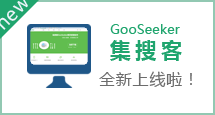Preview & validate data extraction rules
By now, all have been done to define data extraction rules. The user can preview them via pushing two buttons, MAP and GEM, in the right column of the work board.
After the button MAP is pushed, the MAP instruction file is shown in the Mapping Editor tab window of the Output region. The left column of the window is an editor against the instruction file. It should be paid attention that the modifications in the editor could not be uploaded onto the DataStore server. The right column of the window provides a method to adjust the extraction rules so that the starting point of the data snippets to be extracted can be shift backward or forward. As a result, the scope of data extraction is changed. The adjustment can be saved via pushing the Save button in this column. This adjustment is uploaded onto the server when performing schema uploading operation.
Warning: The user should be very familiar with DOM technology to adjust the starting point which is described in detail in MetaStudio Senior User's Handbook
Note: Adjusting the starting point is not recommended because the feature may be deleted in the following versions. If the sample page is not suitable for defining data schema, just select another suitable one.
After the button GEM is pushed, the GEM instruction file is shown in the GEM Editor tab window of the Output region. The left column of the window is an editor against the instruction file. It should be paid attention that the modifications in the editor could not be uploaded onto the DataStore server. The right column has two buttons for test purpose. TestThis button initiates data extraction process using current instruction file which is generated for current Bucket. TestAll button initiates data extraction process using all instruction files which are generated for all Buckets in the work board. After the button has been pushed, an alert window pops up showing how many records, i.e. beans, have been extracted. At the same time, in the Output tab window of the Output region, the resulting XML file is shown.
Exercises
Following the steps described in previous section, push the buttons MAP, GEM, TestThis and TestAll and study the output.
